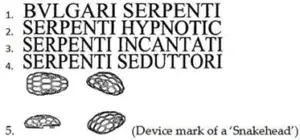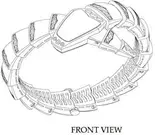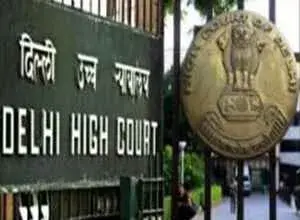By Arpit Kalra and Pranit Biswas
The parties to the present suit dealt in high end luxury jewellery and the plaintiff had filed the suit to restrain the defendants from infringing its trademark and design. In its counter claim, the defendant challenged the territorial jurisdiction of the Delhi High Court and also invoked Section 17 of the Trade Marks Act, 1999 to contend that, it was not permissible for Bulgari to claim exclusivity in respect of “SERPENTI” alone, which constituted a part of the composite mark (which consists of a combination of elements). The Delhi High Court in this case clarified the confusion regarding territorial jurisdiction with respect to online IP infringement matters, and granted an interim injunction restraining the defendant from using the trademark “SERPENTINE” in respect of any of its products and dismissed the application.
Brief facts of the case
The plaintiff, Bulgari SPA and the defendant, Notandas Gems Pvt. Ltd. both were engaged in the business of manufacturing high-end jewellery. The plaintiff approached the Delhi High Court to restrain the defendant from infringing its registered trademark “SERPENTI” by the defendant who was using the device mark “SERPENTINE” for the promotion of their products. The plaintiff claimed that the defendant was infringing its:
- registered trademark ‘SERPENTI’ that is part of four of the plaintiff’s trademark,
- device mark of snakehead, and
- design of its wristwatch and bracelet.
The plaintiff held valid and subsisting registrations in the aforementioned marks and logo on the date of judgment. The plaintiff, Bulgari is the owner of the following trademarks–

Source – Judgement
The device mark “SERPENTINE” of the defendant is given below:

Source – Judgement
Issues in the case
- Whether the plaint is bad for want of territorial jurisdiction?
- Whether a prima facie case of infringement of trademark is made out?
- Whether a prima facie case of infringement of design is made out?
- Whether a case of passing off, by the defendant, of the plaintiff’s mark, is made out?
Plaintiff’s submissions
- The plaintiff contended that the mark ‘SERPENTI’ has become indelibly identified with their jewellery and that the defendant’s trade dress is deceptively similar to the plaintiff’s mark is not hit by the provisions of Section 17 of the Trade Marks Act, 1999 which prohibits an applicant from claiming exclusivity over a part of composite mark if the same has not been separately registered.
- The plaintiff proposed that the word ‘SERPENTI’ has gained a reputation since the 1940s and constitutes a dominant part of their composite mark, making it eligible to claim infringement.
- The plaintiff further contended that the case is of “idea infringement” by the defendant as the trademark ‘SERPENTI’ is neither common to the trade nor descriptive of the goods it is used for.
- In respect of logo infringement, the plaintiff contended that is it sufficient to prove infringement, if the defendant’s logo as similar to the plaintiff’s, as a whole.
Defendant’s Submissions
- While denying the Plaintiff’s contentions, the defendant claimed that the plaintiff’s trademark is a composite mark and therefore, no exclusivity can be claimed on part of it. The defendant invoked Section 17 of the Trade Marks Act, 1999 (Act) to contend that, it was not permissible for Bulgari to claim exclusivity in respect of “SERPENTI” alone, which constituted a part of the composite mark (which consists of a combination of elements). These elements may include words, devices, shapes, sounds, scents, and/or colours.
- The defendant also invoked Section 30(2) of the Act to contend that “serpentine” being merely an adjective form of “serpent”, Bulgari could not claim exclusivity in respect thereof.
- The defendant further claimed that the plaintiff and defendant’s marks are not phonetically similar and the word ‘SERPENTI’ describes the shape of goods in question and is common to the trade since there are several jewellery manufactures using the form of serpent/snake.
- The defendant contended that they are not infringing the plaintiff’s design of snakehead since their design is completely different from the plaintiff’s.
- The defendant also contended that the Delhi High Court did not have territorial jurisdiction to adjudicate the suit, as their exclusive store located in Delhi had been shut and mere interactivity of their website could justify invocation of the jurisdiction of the Court.
Court’s order and Direction in the case
On the point of territorial jurisdiction, the Court relied on precedents to clarify the issue and noted that interactive websites can be divided under two heads namely:
- Websites which merely provide information and;
- Websites across which goods or services may be purchased or availed for consideration.
Where the website falls under the first category (a), the Court will not have territorial jurisdiction unless and until it is shown that such information was accessed by a person located within the jurisdiction of the Court before which the plaint is preferred. While under the second category (b), once the Defendant has made its goods, or services, available for consideration, online, it has, prima facie purposefully availed the jurisdiction of Courts in all territories to deal with a case of trademark infringement where such transactions can be carried out and consummated.
With regards to trademark infringement, the Court noted there is a phonetic similarity between the expressions “SERPENTI” and “SERPENTINE”. As far as invoking section 17 of the Act, the Court observed that section 17 has a proscription embedded against claiming exclusivity over a part of a composite mark unless such part is separately registered as a trademark. However, the Court noted that “SERPENTI” constitutes a prominent/dominant mark in Bulgari’s registered marks and Notandas had prima facie infringed upon the same for using “SERPENTINE” as their mark for their high-end jewellery brand.
As far as design infringement was concerned, Bulgari held design registrations in respect of bracelet and wristwatch.


(Wristwatch) (Bracelet)Source – Judgement
The Court noted that innovation and novelty run through the scheme of the Act and that Notandas’s design was different from Bulgari’s. Hence, no case of infringement could be made out. The Court concluded saying that at the most a case of passing off could be made out. However, no specific averments were present in Bulgari’s plaint. Accordingly, the Court granted an interim injunction restraining Notandas from using the trademark “SERPENTINE” in respect of any of its products and dismissed the application.
CONCLUDING REMARKS
The present judgement delivered by the Delhi High Court is crucial as the Court has cleared an all-time confusion regarding territorial jurisdiction with respect to online infringement in IP matters. It was established that all Courts that have jurisdiction over territories, from which commercial transactions can be concluded across an interactive website, would prima facie have territorial jurisdiction to adjudicate for infringement. This judgement shall help parties to decide the jurisdiction cautiously after analyzing the two heads in cases of online infringement.
Related Posts
Territorial Jurisdiction of the Delhi High Court in Trademark Infringement Cases


